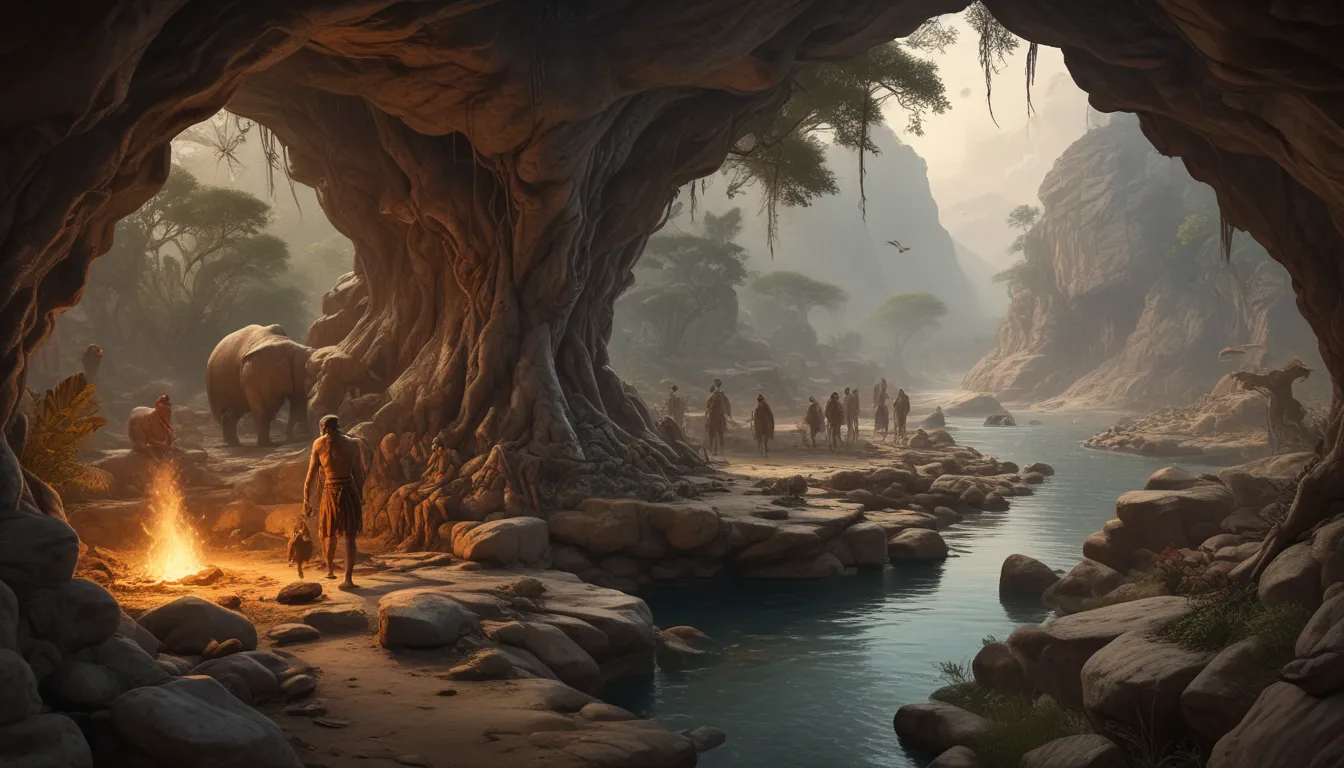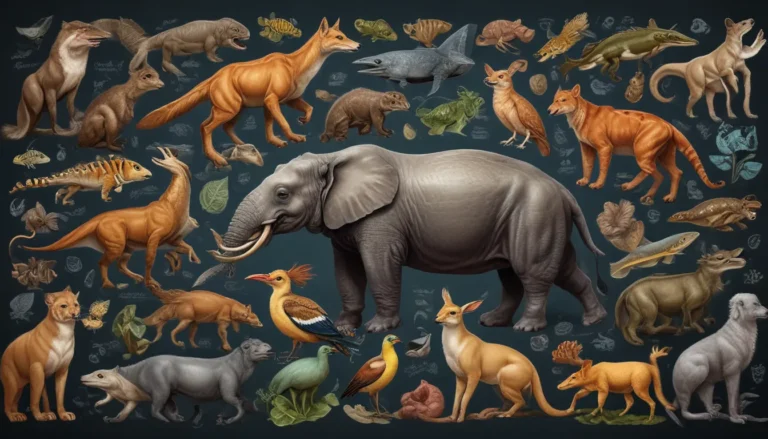A Note About Images: The images used in our articles are for illustration purposes only and may not exactly match the content. They are meant to engage readers, but the text should be relied upon for accurate information.
Welcome to the Paleolithic Era, a captivating period in human history that spans millions of years and holds the key to understanding our ancient ancestors. From the mastery of fire to the creation of intricate cave paintings, the Paleolithic Era is a testament to the resilience, creativity, and adaptability of early humans. Join us as we delve into 12 astonishing facts about this remarkable era, shedding light on the lives of our ancient forebearers and the incredible achievements they accomplished.
Unveiling the Stone Age Revolution
The Paleolithic Era, also known as the Old Stone Age, emerged around 2.6 million years ago and lasted until approximately 10,000 years ago. This pivotal period witnessed the rise of early humans as hunter-gatherers, shaping the trajectory of our evolution as a species. Let’s explore the fascinating world of the Paleolithic Era and uncover some of its most intriguing facts.
Hunter-Gatherers: The Original Food Foragers
- Hunter-Gatherers at Heart: The Paleolithic people were adept hunter-gatherers, utilizing their skills to track wild animals and identify edible plants in their surroundings.
- Survival Instincts: Their ability to hunt and gather food was crucial for their survival in a world filled with challenges and uncertainties.
Fire: A Transformative Tool
- The Power of Fire: The mastery of fire was a game-changer during the Paleolithic Era, providing warmth, protection, and the ability to cook food.
- Nutritional Evolution: Cooking food made it easier to digest, unlocking new nutritional possibilities and contributing to the physical and cognitive development of early humans.
Cave Paintings: Capturing History in Stone
- Artistic Expressions: Paleolithic humans expressed their creativity through intricate cave paintings, offering valuable insights into their daily lives and cultural practices.
- Historical Narratives: These paintings depict scenes of hunting, rituals, and interactions with the diverse flora and fauna of their environment, showcasing their deep connection to nature.
Megafauna: Giants of the Ice Age
- Majestic Creatures: The Paleolithic Era was home to magnificent megafauna, including woolly mammoths, saber-toothed cats, and giant sloths that roamed the Earth alongside early humans.
- Thriving Ecosystem: The presence of these awe-inspiring animals highlights the rich biodiversity and ecological diversity of the prehistoric world.
Migration: Journeys Across the Ancient Landscape
- Nomadic Lifestyle: Paleolithic humans were nomads, migrating across vast distances in search of food, water, and favorable conditions for survival.
- Adapting to Change: Their ability to adapt and navigate different environments was a testament to their resilience and resourcefulness.
Technological Advancements: Innovations in Stone Age Technology
- Stone Tools and Weapons: Paleolithic humans ingeniously crafted tools and weapons from stone, bone, and antler, enhancing their hunting and survival capabilities.
- Specialized Techniques: The development of more specialized tools over time enabled early humans to evolve and thrive in diverse environments.
Language and Communication: The Dawn of Expression
- Rudimentary Communication: While the specifics remain unknown, it is believed that early humans developed rudimentary forms of communication during the Paleolithic Era.
- Cultural Exchange: Language played a vital role in facilitating cooperation, knowledge-sharing, and emotional expression within ancient communities.
Ritualistic Burials: Honoring the Departed
- Cultural Practices: Evidence of ritualistic burials found in Paleolithic sites suggests that early humans had concepts of the afterlife and engaged in mourning and symbolic rituals.
- Spiritual Beliefs: These burial practices reflect the cultural and spiritual traditions of our ancient ancestors, offering insights into their beliefs and values.
Cultural Diversity: A Tapestry of Unique Traditions
- Varied Cultures: The Paleolithic Era was characterized by diverse groups of hunter-gatherers, each with its unique cultural practices and traditions.
- Artistic Expressions: Variations in cave art, tool designs, and burial customs showcase the rich cultural tapestry of early human societies.
Adaptability: Thriving in Adverse Environments
- Resilient Survival: Paleolithic humans demonstrated remarkable adaptability, surviving in extreme environments ranging from icy tundra to arid deserts.
- Expansion and Evolution: Their ability to adapt and thrive enabled early humans to expand their territories and explore new horizons.
Evolutionary Milestone: Transition to Agriculture
- Agricultural Revolution: The end of the Paleolithic Era marked a significant shift as humans transitioned from a hunter-gatherer lifestyle to settled farming communities.
- Catalyst for Change: The emergence of agriculture revolutionized human societies, setting the stage for the development of complex civilizations and new societal structures.
The Paleolithic Era stands as a testament to the ingenuity, resilience, and cultural richness of our ancient ancestors. By exploring the remarkable achievements of this era, we gain a deeper appreciation for the challenges and triumphs that shaped human evolution and civilization. Let’s continue our journey of discovery into the distant past and uncover the untold stories of our prehistoric roots.
Explore Further: Unraveling the Mysteries of Human History
If these Paleolithic Era facts have sparked your curiosity, why not embark on a journey of prehistoric exploration? Venture into the enigmatic world of Bhimbetka’s rock shelters, where ancient artists left their mark on history. Each destination holds a unique story waiting to be discovered by inquisitive minds like yours. So, which captivating chapter of human history will you explore next?
Your Feedback Matters
At the core of our mission is the commitment to delivering trustworthy and engaging content that enriches your knowledge and understanding. Each fact shared on our platform is contributed by users like you, ensuring a diverse range of insights and information. Our dedicated editors meticulously review each submission to maintain the highest standards of accuracy and reliability. Trust in our dedication to quality and authenticity as you embark on a journey of exploration and learning with us.






